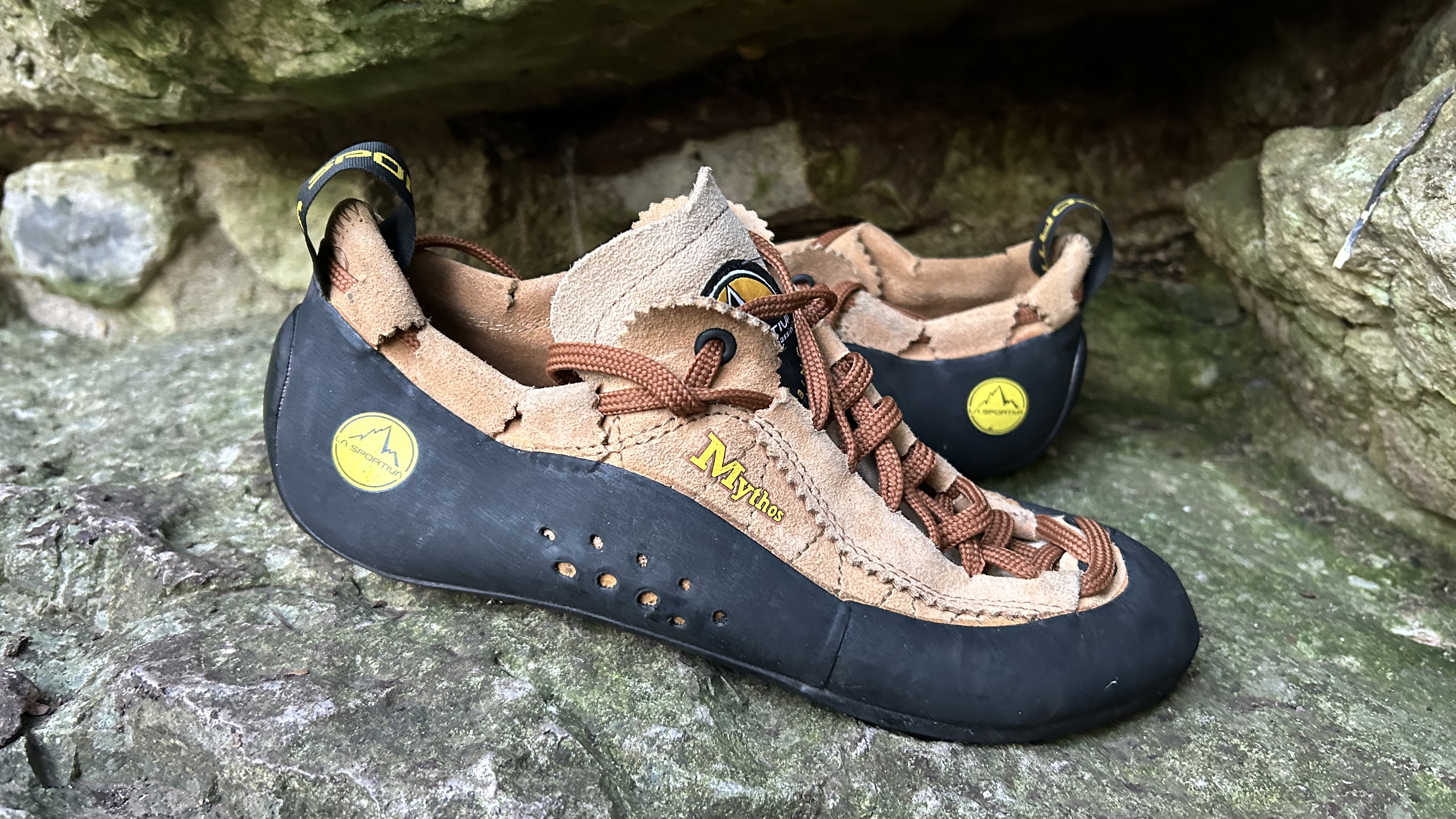Advnture Verdict
The Mythos is a popular classic for a reason; its soft fabric and all-day comfort make it a go to for experienced multi-pitch climbers, trad enthusiasts and beginners alike. Getting the size right is crucial, while there are more aggressive climbing shoes out there for hard sport projects and bouldering endeavors. However, the Vibram XS Edge sole grips reassuringly well, their design makes them well suited to crack climbing and their unrivalled comfort attracts big wall climbers.
Pros
- +
Soft fabric makes them relatively comfortable
- +
Shoe expands with your feet
- +
Decent performance for crack climbers
- +
Comfort for longer, multi-pitch routes
- +
Protective rand
- +
Lacing ensures a precise fit
Cons
- -
Not brilliant for edging
- -
Not great for bouldering or harder sport
- -
Steep price for a neutral shoe
You can trust Advnture
La Sportiva is a name that needs no introduction in the climbing and mountaineering world. The Italian brand has steadily garnered a reputation for excellence since its inception in 1928, when Narciso Delladio started out by crafting wooden leather boots for farmers and lumberjacks in the Dolomites.
I’ve been a big fan of the brand since I purchased my first pair of winter hiking boots, the iconic Trango Tower GTX, during my journey from hiker to mountaineer. As this journey evolved, I soon needed climbing shoes too, and I chose La Sportiva for my first pair, based on the recommendation of the lovely people at Mile End Climbing Wall in East London.
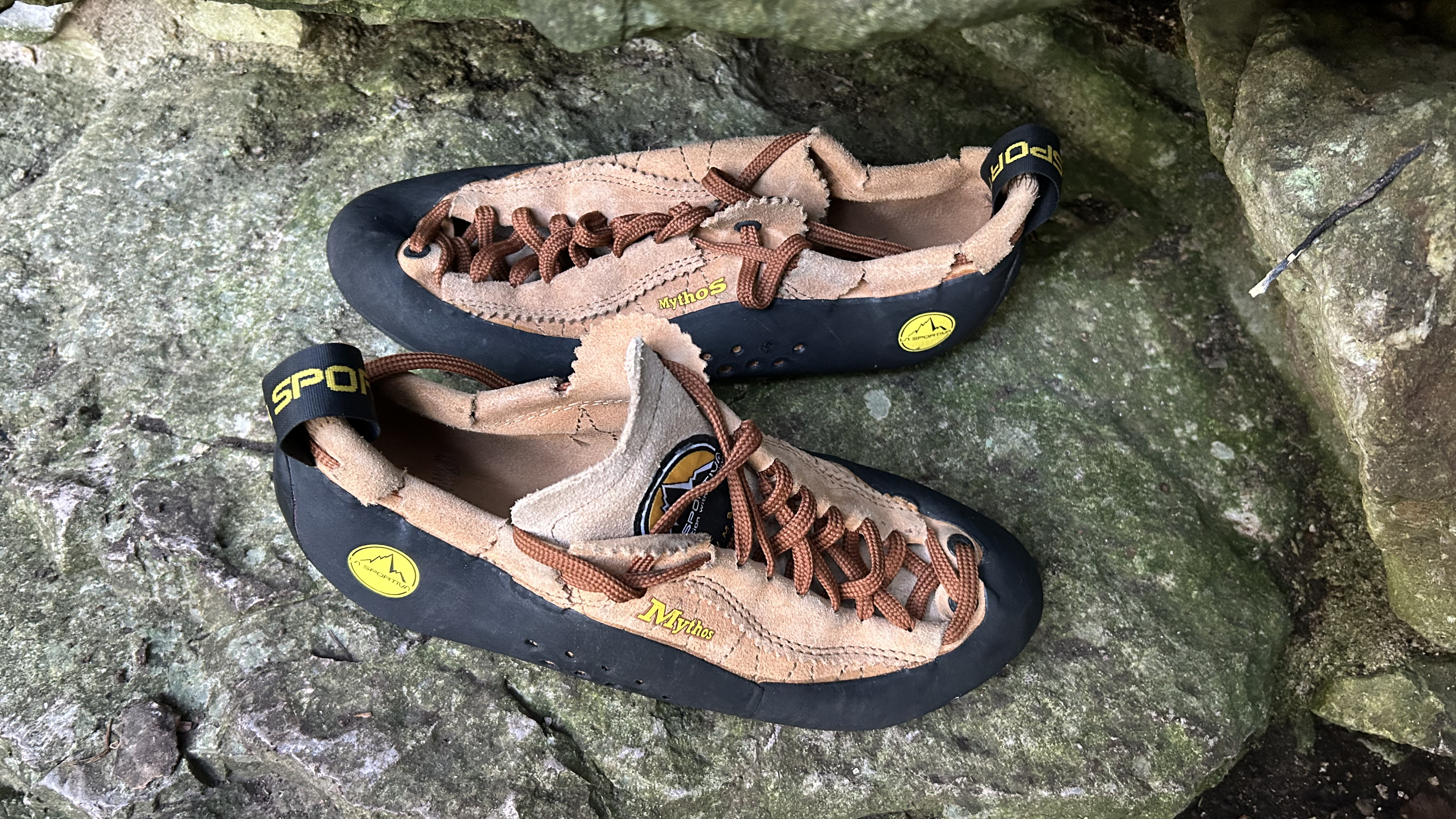
My chosen pair were the La Sportiva Mythos. At the time, I wasn’t aware that these were legendary among climbers for their all-day comfort. They were very much the brand’s first really popular climbing shoe when released in 1991, so much so that the design hasn’t changed to this day, though the more recent Eco version is a more sustainable upgrade. This is the only model available these days in the States, though the original is still on the shelves in Europe.
A flat-lasted, neutral all-rounder boasting famous levels of comfort and decent performance, it’s easy to see why the Mythos is considered a classic. The video below reveals more:
First impressions
RRP: $159 (US – Eco version) / £125 (UK)
Weight (per shoe): 255g / 9oz
Lining: None
Unisex: Men’s and women’s versions available
Outsole: Vibram XS Edge
Upper: Suede leather
Colors: Terra (Men’s), Multicolor (Women’s)
Compatibility: Great for longer, multi-pitch routes and crack climbing
The Mythos has a timeless quality to it, looking both retro and somehow modern at the same time, despite having been around the block more than a few times. Perhaps it’s the Italian suede leather that does it.
First wear reveals a nicely padded tongue and a sense of precision. The lacing system wraps around the heel, something that made the shoe unique upon launch in 1991.
The laces allowed me to achieve a very snug fit, which is obviously important when it comes to precision and performance. My toes didn’t feel bunched in as with more aggressive climbing shoes, even though the front of the shoe narrows significantly. Overall, I was impressed fairly with the balance between the shoe’s comfort and its precise feeling fit.
Fabrics and design
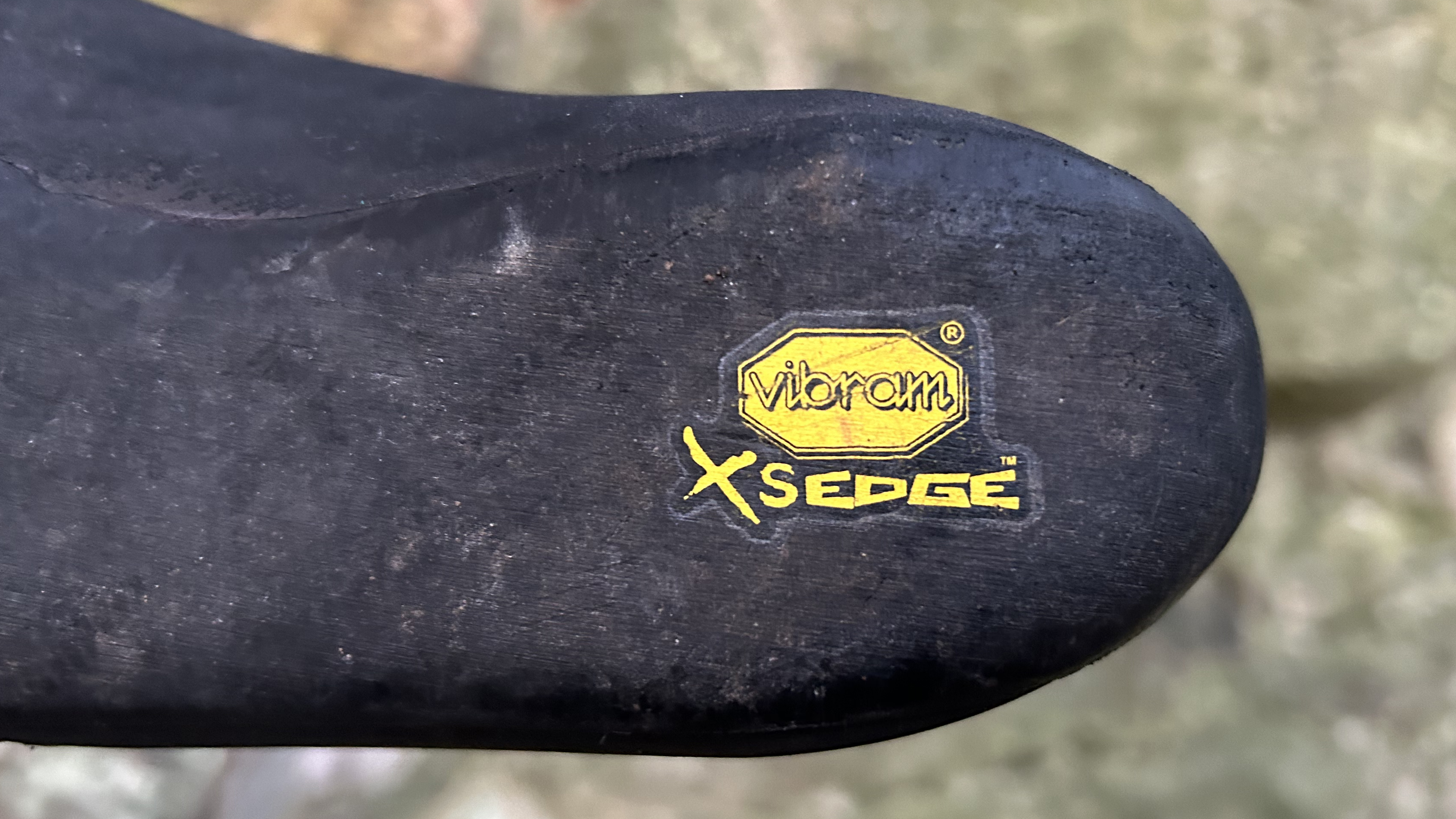
Considering this is a product that was originally intended as a competition climbing shoe, it's remarkable how the Mythos has become such a go to for multi-pitch climbers, perhaps an indication of how rock climbing has changed since the early 90s. Its popularity among multi-pitch trad aficionados is due to how comfortable it is during extended periods of wear. The suede upper expands just as the foot swells during hot afternoons on the crag, providing comfort and precision both at the start of the day and at the end. The suede and protective rubber rand also add a degree of durability.
The sole is provided by fellow Italian brand Vibram, in this case using its XS Edge compound. As the name suggests, the compound is designed for high performance when edging, holding its shape and providing as much friction as possible. The same compound is used in Scarpa’s Instinct Lace, Vapor V and La Sportiva’s Kataki and Katana, among others.
A notable design feature, that was ahead of its time back in 1991, is the way the harder rubber of the sole was used as a rand at the heel. This sort of rand is commonplace these days and allows for heel hooking on small edges, giving the climber a greater chance of sending overhanging routes, as well as a welcome opportunity to take the weight off their hands.
Fit and comfort
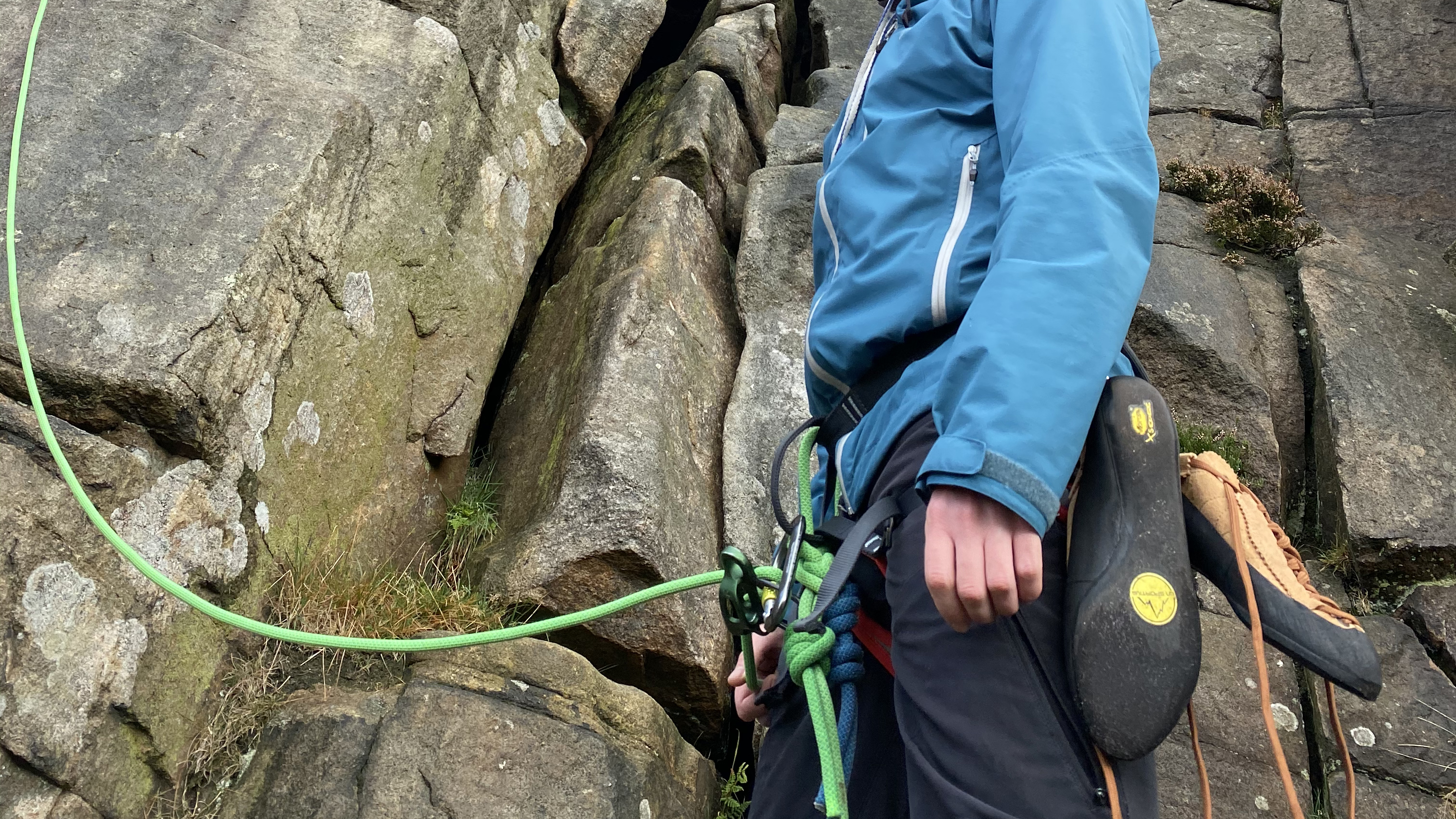
A key concern with La Sportiva climbing shoes is to get the sizing right. Rock climbing shoes shouldn’t be uncomfortable, but they should also fit very snugly for maximum performance. My everyday footwear size is a UK 8 (US 8.5 or 9), but for my pair of Mythos shoes, I settled on a UK 6 (US 7), having taken some time to try different sizes while purchasing. La Sportiva actually recommend this kind of downsizing, saying: ‘to optimize performance and ensure a stronger grip, more experienced climbers suggest buying a climbing shoe that is 2 sizes smaller than the size used for other types of footwear’.
This meant that I ended up with a relatively comfortable, yet very snug fit. While it’s certainly aided my performance, I did find that they took a little breaking in, even with their soft and comfortable reputation. I’d say that, if comfort is your number one priority, don’t go too snug. However, once broken in, the Mythos lived up to the hype, allowing me to climb for extended periods without too much discomfort and, as has been commented upon many times before, it eventually shaped itself to my foot. It’s a real balancing act, as if you leave too much room, performance will suffer, particularly when edging.
On the crag
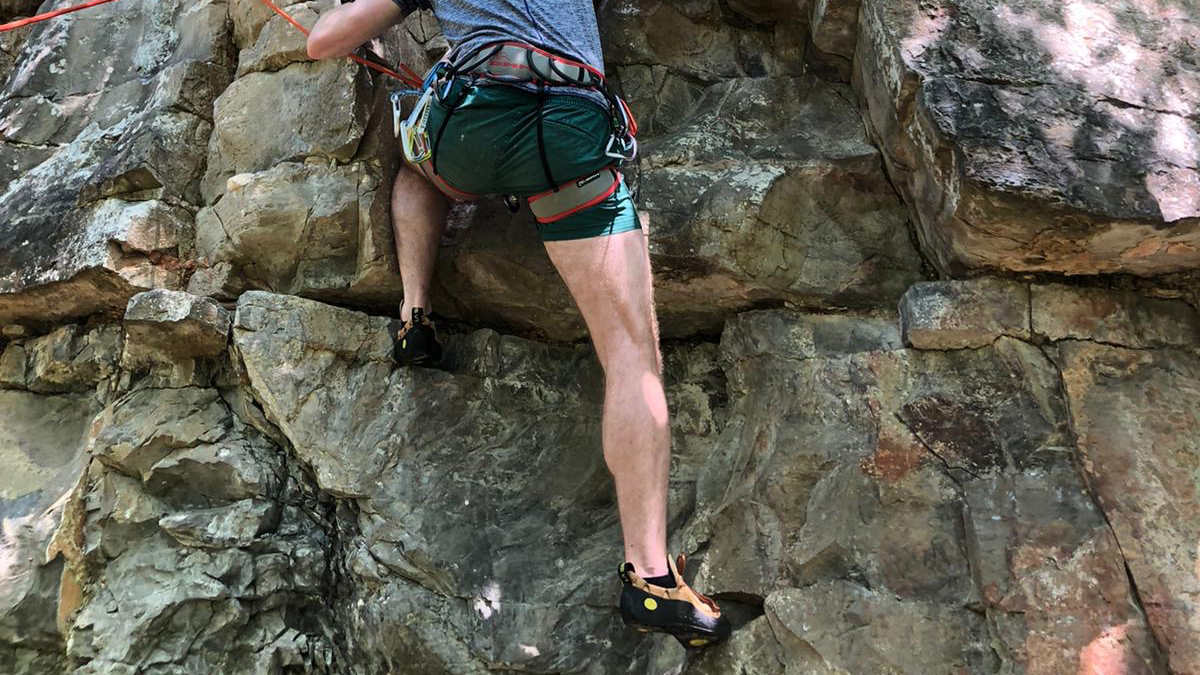
I’ve been enjoying my pair of Mythos climbing shoes for more than five years, climbing in places like Britain’s Wye Valley, the Peak District and the Scottish Highlands, as well as on sport crags in the Alps. I’m admittedly not much of a boulderer, nor am I a high-grade sport climber – my preferred climbs are easier multi-pitch routes – I came to climbing from scrambling and mountaineering, after all. For these kinds of adventures, the long-lasting comfort and solid performance of the Mythos is ideal.
Sure, when it comes to edging, more technical, aggressive shoes have the… edge, such as the Scarpa Instinct Lace. But, for a neutral shoe – the type of climbing shoe best suited to beginners and all-day wear – the Mythos certainly holds its own. The toe section, although not so tight that my toes were bunched together, is relatively pointed, good for finding purchase on small features, as well as for jamming into cracks. This is why the shoe is perennially popular with crack climbers. This, coupled with its comfort, explains why big wall climbers in the States and in the Dolomites frequently opt for the Mythos.
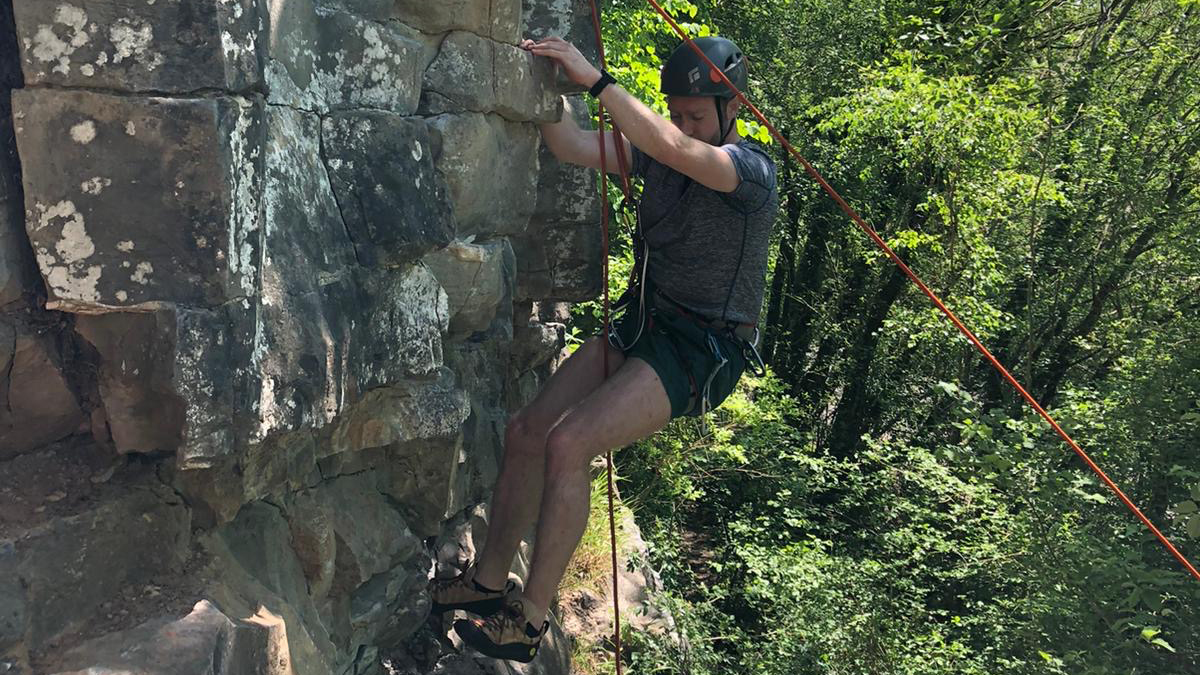
As mentioned, the heel rand provides the platform for effective heel hooking too, while the sole is nicely formed and flexible enough for decent smearing on featureless slabs, where the XS Edge provided a good level of friction.
When taking multi-pitch routes, particularly those where you’re going to be squeezing your foot into vice-like cracks, protection is paramount. You don’t want your foot to feel like it’s been through the proverbial grinder. Fortunately, I’ve always found the Mythos’ to be nicely protective, thanks to the wrap-around rand that provides an effective shield against abrasion.
So, cracks, tick. Heel hooks, tick. Smearing, tick. Edging, could be stronger. But, for an all-round shoe that’ll stay comfortable for hours on end, this is a great shout.
Alex is a freelance adventure writer and mountain leader with an insatiable passion for the mountains. A Cumbrian born and bred, his native English Lake District has a special place in his heart, though he is at least equally happy in North Wales, the Scottish Highlands or the European Alps. Through his hiking, mountaineering, climbing and trail running adventures, Alex aims to inspire others to get outdoors. He's the former President of the London Mountaineering Club, is training to become a winter mountain leader, looking to finally finish bagging all the Wainwright fells of the Lake District and is always keen to head to the 4,000-meter peaks of the Alps. www.alexfoxfield.com
